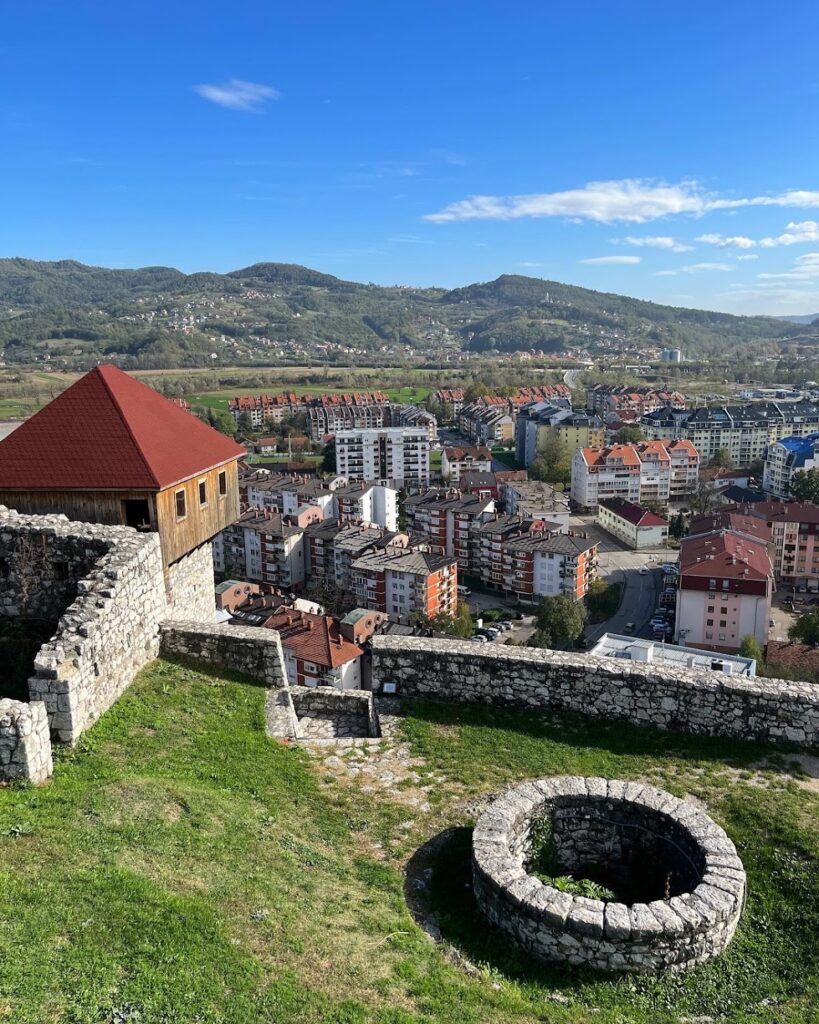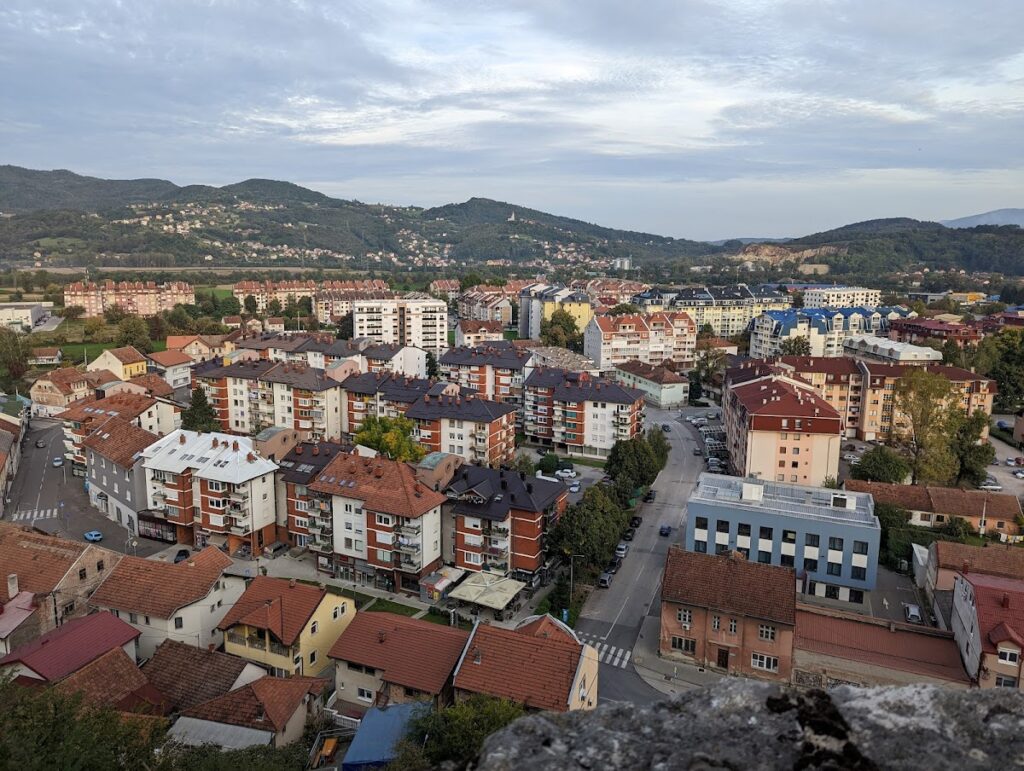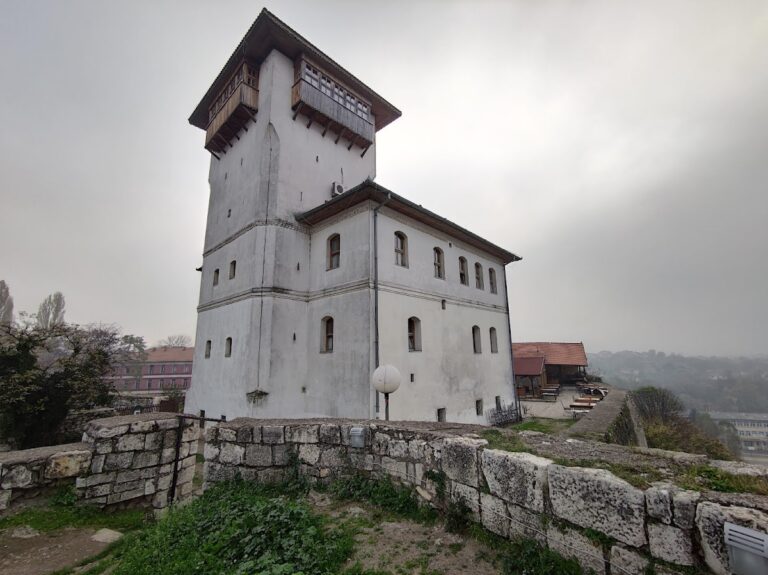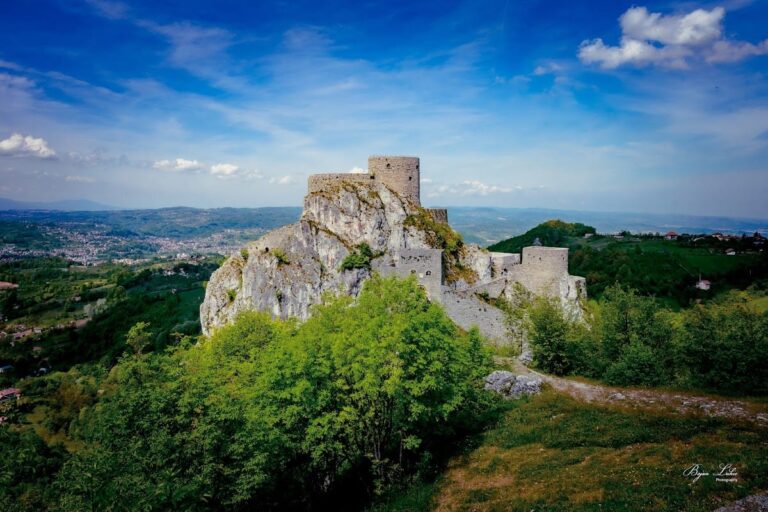Fortress of Doboj: A Medieval Stronghold in Bosnia and Herzegovina
Visitor Information
Google Rating: 4.6
Popularity: Low
Google Maps: View on Google Maps
Country: Bosnia and Herzegovina
Civilization: Unclassified
Remains: Military
History
The Fortress of Doboj, located in the municipality of Doboj in present-day Bosnia and Herzegovina, was originally constructed by the medieval Bosnian state. Its earliest foundations trace back to an earlier fortified structure made of wood and clay dating from the 10th or 11th century, upon which the stone fortress was built during the early 13th century.
During the medieval period, Doboj emerged as a significant stronghold within the Bosnian banate or duchy of Usora. Unlike many castles that belonged to local nobility, Doboj was notable for being royal property under the influential Kotromanić dynasty. Its position was critical in overseeing key access routes into the kingdom of Bosnia, especially the roads leading north towards Croatia, east alongside the Spreča river, and south following the Usora river.
In the spring of 1415, the fortress underwent a substantial reconstruction in the Gothic style, which included reinforcing the main keep and adding artillery bastions. That same year, in August, the fortress witnessed military action near the site of the Battle of Doboj. Bosnian nobles, allied with Ottoman forces, claimed victory over a large Hungarian army. The battle around the fortress involved thousands of knights and heavy cavalry units, with Ottoman auxiliaries playing a key role. This conflict underscored Doboj’s strategic importance in the ongoing wars between Bosnia and Hungary throughout the 13th to early 15th centuries.
The fortress fell to the Ottoman Empire in 1476, marking the beginning of over four centuries of Ottoman control. Significant renovations occurred in 1490 when master-builder Ibrahim expanded the defenses by adding a second outer wall and additional buildings. Despite occasional brief recaptures by Hungarian and Bosnian troops, the Ottomans maintained dominance until the late 19th century. The castle endured several attacks during Austro-Turkish wars, including being sacked and burned by Austrian troops in 1697 and again in 1717. By 1740, the fortress’s role became largely military-policing in nature, illustrated by the establishment of a torture chamber and a shrinking garrison numbering roughly 40 soldiers.
In 1878, Austro-Hungarian forces captured the fortress after intense fighting that included fierce resistance from local Bosnian Muslim defenders, suffering heavy casualties approaching 1,000 men. Under Austro-Hungarian rule, the fortress continued to serve military purposes, including during World War I.
During the Second World War, Doboj Fortress was garrisoned by strong Croatian Ustasha and German Wehrmacht forces. These occupiers fortified the site further by adding bunkers and fiercely resisted local uprisings in 1941. The fortress remained a site of armed struggle until the final assault by Yugoslav Partisans in April 1945, marking the end of its active military use.
Archaeological investigations have taken place intermittently, with major excavations in 1962 and renewed explorations in 2016-2017. Findings from these digs include medieval arrowheads, crossbow bolts, pottery, glass, and metal objects, shedding light on the fortress’s long military and domestic history. Today, the Fortress of Doboj stands as a protected cultural monument, though it has experienced vandalism and periods of neglect in recent decades.
Remains
The fortress is a large stone complex featuring several architectural phases reflecting its long history. Its core dates to the early 13th century and was built originally in the Romanesque style, later heavily remodeled with Gothic elements during the 15th century. The central stronghold is a five-story main keep, or donjon, with a square base, a distinctive form uncommon in this region. This tower’s eastern walls were reinforced to about one meter in thickness to withstand attacks.
Surrounding the core was a triangular-shaped layout, gradually enclosed by outer walls forming a defensive perimeter. Protection was provided by three large towers positioned at the northern, eastern, and southern gates. Notably, the southern tower was reshaped into a rounded form between 1370 and 1380 to better resist cannon fire, reflecting advancements in siege technology. During the 1415 reconstruction, a bastion housing six cannons was added at the northern tower, demonstrating a shift toward artillery-based defense.
The fortress’s arsenal included local weaponry such as swords, lances, halberds (pole weapons), bows, and crossbows. Importing finer arms and gunpowder weapons came from Germany, Venice, and the Republic of Ragusa (modern-day Dubrovnik). Dubrovnik engineers also contributed to the fortress’s water supply system by building a cistern within the upper fort area, an essential feature for withstanding sieges.
Archaeological discoveries from the site, especially those dating to the 16th century, have revealed a variety of artifacts. These include military items such as medieval crossbow bolts and fragments of plate armor, as well as a rare bronze candlestick shaped like a tulip. Finds of pottery and decorative ceramics contribute to understanding the everyday life and material culture within the fortress.
Although the fortress suffered some damage from shelling during the Bosnian War of the 1990s, it remains well preserved overall. While its defensive walls, towers, and the main keep still stand, certain interior sections have faced vandalism. Features such as an abandoned amphitheater and entrances show signs of wear and require ongoing conservation. Recent archaeological efforts between 2016 and 2017 have uncovered more medieval artifacts and highlighted that the foundations and lower levels of the three flanking towers await further exploration, promising new insights into the fortress’s developmental phases.








